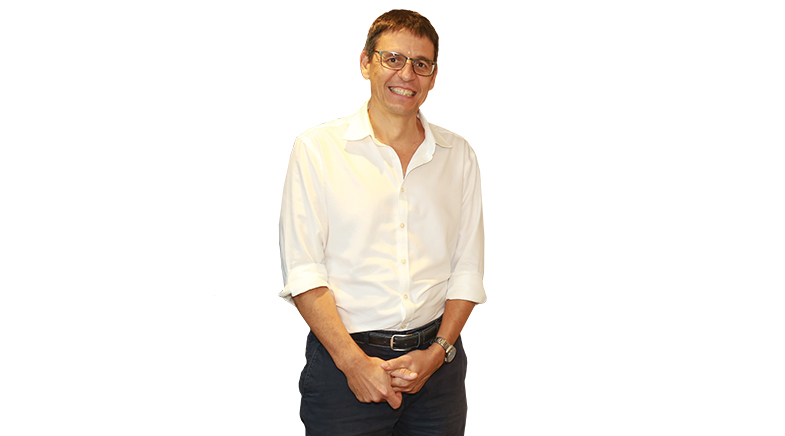This telescope in Ooty is over the muon
-
- from Shaastra :: vol 03 issue 04 :: May 2024

CRL scientists are studying the mysteries of cosmic rays with the help of an indigenous muon telescope, the most sensitive on Earth.
Udhagamandalam, in the scenic Nilgiris, is all decked up and bursting with tourists ahead of the 126th edition of the annual flower show in May at the Botanical Gardens. Enchanting as the sight is, floral beauty is farthest from the minds of the astroparticle physicists at the 70-year-old Cosmic Ray Laboratory (CRL), a segment of which lies just beyond the Gardens. Their sights are instead trained on what for them is just as beauteous: cosmic rays, or clusters of particles that move through space at very high energies. The ongoing experiment at the laboratory — to study cosmic rays at an ‘intermediate’ energy range — is its primary area of focus now. “It is a one-of-a-kind experiment,” asserts Fahim Varsi, the first author of a recent paper on the experiment in Physical Review Letters (bit.ly/muon-grapes). The lab itself is a tribute to scientific instrumentation, which typically does not get much favourable attention.
The experiment goes by the fruity acronym GRAPES-3, which stands for Gamma Ray Astronomy PeV EnergieS – Phase-3. PeV, or petaelectronvolt, is a unit of energy used in particle physics (1 PeV is equivalent to the energy of a housefly moving at 20 kmph). As part of the experiment, the scientists have built up almost entirely in the lab a muon telescope — the most sensitive one on Earth — and an array of 400 scintillator detectors to study cosmic rays at 1-100 PeV. The experiment is a collaborative effort with Japanese researchers. Within a year, GRAPES-3 is expected to double the number of scintillation detectors and double the size of the muon telescope.
A field station of the Tata Institute of Fundamental Research (TIFR) Mumbai, the lab operates from two sites: the primary one, proximate to the Gardens in Udhagamandalam or Ooty, and the other at Tamil Nadu’s Melkavatty village, some 8 km (and a bone-rattling drive) away. The Ooty centre houses the second phase of the experiment, currently in operation but being reworked, and the facility for casting and making the plastic scintillator detectors.
Little is known about the subject of research at the CRL, namely, the cause, composition and origins of cosmic rays. These are showers of particles that rain down upon the Earth from the cosmos. They mostly consist of charged particles, about 90% of which are nuclei of hydrogen or protons. Nuclei of heavier atoms — ranging from helium to iron — make up the rest, along with uncharged particles such as neutrinos and gamma rays. Gamma rays are particles of short-wavelength, high-energy light. All of these carry clues to the question of the cosmic rays’ origins.
As the cosmic rays travel towards the Earth, they collide with particles in the atmosphere and break down into secondary showers of particles, including muons — heavier cousins of the electron — and more gamma rays. The first step towards unravelling the mysteries of the cosmic rays is to measure their energy and identify the type of particle that gave rise to the muon-electromagnetic shower. This is done in the CRL by studying the muons, electrons and gamma rays in the secondary showers, and from their number and energies, working back to the energies and constituents of the parent, or primary, cosmic rays. And helping them in this are scintillator detectors on the sprawling grounds of the Melkavatty centre.
At first sight, from a distance, the 400 white tetrahedral covers of the detectors appear like headstones in a war memorial or cemetery. To a bird’s eye, the detectors would show a hexagonal arrangement, with the control room at the centre and the muon telescope in a roofed enclosure on the side. In the control room, the health of the detectors is monitored continuously, supervised by Scientific Officer B. Rajesh. “Studying cosmic rays is like studying the machinery of the engine that drives the universe,” says Sunil Gupta, a Raja Ramanna Fellow at TIFR Mumbai and one of the architects of GRAPES-2 and GRAPES-3 telescopes.
PAST ISSUES - Free to Read


Have a
story idea?
Tell us.
Do you have a recent research paper or an idea for a science/technology-themed article that you'd like to tell us about?
GET IN TOUCH














